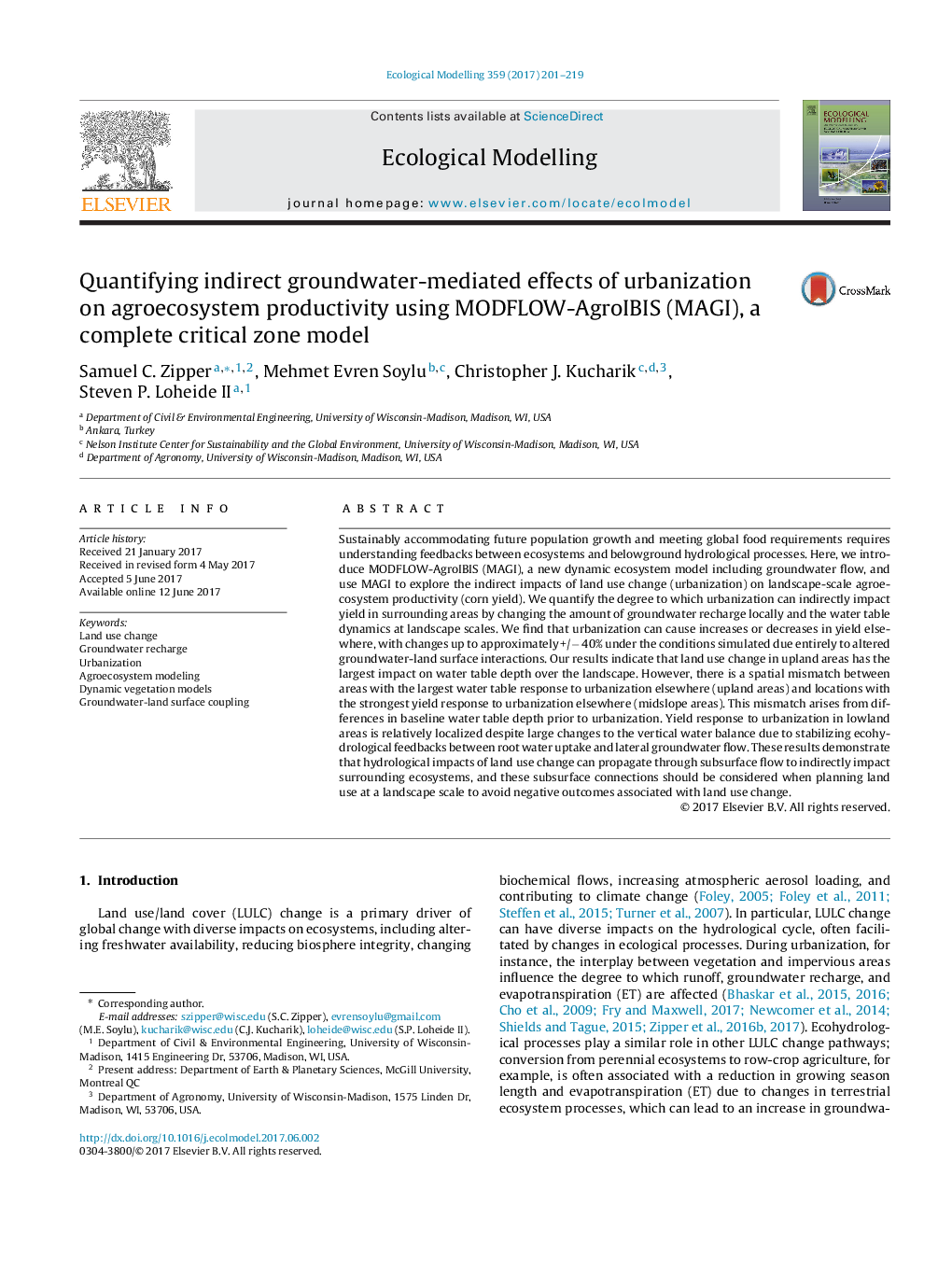| Article ID | Journal | Published Year | Pages | File Type |
|---|---|---|---|---|
| 5742132 | Ecological Modelling | 2017 | 19 Pages |
â¢Introduce MODFLOW-AgroIBIS (MAGI), a new critical zone model with agroecosystems.â¢Urbanization in one location can impact yield elsewhere via altered groundwater flow.â¢Landscape-scale impacts of upland urbanization due to decreased groundwater recharge.â¢Local impacts of lowland urbanization due to stabilizing ecohydrological feedbacks.â¢Impacts of urbanization depend on antecedent groundwater-land surface relationship.
Sustainably accommodating future population growth and meeting global food requirements requires understanding feedbacks between ecosystems and belowground hydrological processes. Here, we introduce MODFLOW-AgroIBIS (MAGI), a new dynamic ecosystem model including groundwater flow, and use MAGI to explore the indirect impacts of land use change (urbanization) on landscape-scale agroecosystem productivity (corn yield). We quantify the degree to which urbanization can indirectly impact yield in surrounding areas by changing the amount of groundwater recharge locally and the water table dynamics at landscape scales. We find that urbanization can cause increases or decreases in yield elsewhere, with changes up to approximately +/â 40% under the conditions simulated due entirely to altered groundwater-land surface interactions. Our results indicate that land use change in upland areas has the largest impact on water table depth over the landscape. However, there is a spatial mismatch between areas with the largest water table response to urbanization elsewhere (upland areas) and locations with the strongest yield response to urbanization elsewhere (midslope areas). This mismatch arises from differences in baseline water table depth prior to urbanization. Yield response to urbanization in lowland areas is relatively localized despite large changes to the vertical water balance due to stabilizing ecohydrological feedbacks between root water uptake and lateral groundwater flow. These results demonstrate that hydrological impacts of land use change can propagate through subsurface flow to indirectly impact surrounding ecosystems, and these subsurface connections should be considered when planning land use at a landscape scale to avoid negative outcomes associated with land use change.
Graphical abstractDownload high-res image (141KB)Download full-size image
